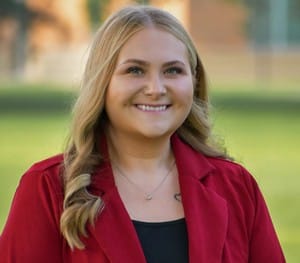The Crookston Public Schools Long-Range Planning Committee met on Wednesday night, discussing a variety of topics including enrollment trends and the number of schools operated, a football and track complex, security changes at entryways into the schools and district office, and more. No action was taken during the meeting, but the committee did give Crookston Superintendent Jeremy Olson a few items to pursue more thoroughly.
ENROLLMENT TRENDS/ONE ELEMENTARY
Olson presented the committee with long-range projections on enrollment through the 2024-2025 school year. Those projections show relatively steady enrollment in the next couple of years at around 1,125 before declining to 1,070 by 2025. Olson expressed that if the trend projections are accurate at some point beyond when the projections end, Crookston Public Schools could be looking at a situation where it would become more advantageous only to operate one elementary school.
Olson said that while the trend data shows a decline, the hope is that enrollment will stabilize across the district. “We’re hoping to have a stabilization in enrollment,” said Olson. “What the trend is showing right now from what we’re projecting is some stabilization over the next couple of years and then tapering off in years 3-5. So, seeing a slight decrease in our enrollment over the next five years. That’s what the current numbers are projecting. Obviously, hoping for better results, but that’s what the numbers show at this point.”
While trends nationally show declining enrollment and population, Olson said the trend data the school uses is based on the data from the past few years in Crookston only. “We take a projection for kindergarten, and we just make an assumption on how many kids are coming in kindergarten,” said Olson. “That number is based on previous years’ history along with what we’re seeing in the last couple of years. We roll all students down a year, assuming all students advance and put in five (additional) students in seventh grade, assuming private school students coming into our district.”
Olson added it would likely take five to eight years using the trend data numbers for a significant enough shift in enrollment to occur that would make the one elementary option something the district needs to discuss actively. “To be truthful and transparent, we want to take a look at the future and how to be more efficient as a district,” said Olson. “When we talk about efficiency, we’re not just talking about dollars and cents. We’re also talking about educational services. So, having one elementary school for Crookston down the road does allow for some efficiency for Title I services, Special Education delivery of services, some teaming, and collaboration. There are several advantages. Whenever you have a building break, you have to do a lot of work to make sure there is collaboration happening, which our teachers do a great job on. But at this time in the foreseeable future looking four years down the road at our enrollment projection, we believe we will have two elementary schools in Crookston because our (current) numbers are strong enough to support that.”
FOOTBALL FIELD/TRACK
The committee then wrestled with how the cutting of the football program at the University of Minnesota Crookston (UMC) affects the school district and what the options would be for the district going forward. Olson told the committee he had spoken with UMC Chancellor Mary Holz-Clause about the plans for the field and learned that UMC would be interested in leasing for one to five years but not selling the facility. “We’ve had a long-standing partnership with UMC and are very grateful for that and the continued partnership,” said Olson. “What we’re looking at is that at this point, UMC is not interested in selling the field, so they are looking at a long-term lease being one to five years. That’s very tentative at this point, so we have to look at what does our future looks like with football fields and so forth.”
School Board Member Mike Theis said if the school was going to lease the facility, he’d like to see a long-term lease using the example of 50 years that gave the school district more control over property than just the ability to play games there. Theis also said he wouldn’t be opposed to taking the question of a much longer lease or purchasing the property beyond the campus to higher levels within the university system.
School Board Chair Frank Fee said he felt the district should look at doing something themselves and not rely on someone else. He added he finds it embarrassing for a school Crookston’s size to not have a home track for the sport with the highest participation. The other available option is to have discussions with the City of Crookston, who has created a task for a regional event center that could include a football field and track. Olson said he is currently unsure how a partnership like that would work out. “The second thing would be to start looking at preparing to have a solution on Crookston Public Schools’ land,” said Olson. “I really don’t know how to comment on a partnership because we’re working on what does that look like, and I don’t have specifics. The nature of what we desire as a school district would be a football field and a track because right now, we are very limited in what we can do for tracks. The current track (at UMC) doesn’t allow us to hold events, and we’d like to do that in the future it just takes a lot of planning. This meeting was basically about dreaming and looking at the future five years down the road from the facility standpoint. Our number one goal is educational excellence, which we’ve been working on the last couple of years, but now we need to start looking at the facilities to house that educational excellence. When we look at facilities, we look at both the academic and athletic facilities.”
Fee also said if a football field were to go to a referendum, he’d have some concerns because the message in the fall was that there probably wouldn’t be another referendum for a while. But Fee also said that if it comes down to the district needing to build its own field and track that the community would be understanding given nobody knew UMC would be dropping football.
PROJECTS IN THE SCHOOLS
The committee also reviewed several projects throughout each of the three schools. Some were short-term projects that would be completed during 2020, such as new entrances at Highland School, while others such as a roof replacement at Highland could be ten years or more out. Olson said one focus is on the first impression made when someone enters one of the Crookston Public Schools buildings. “We took a look at a couple of different things,” said Olson. “A lot of it focused on when our guests, students, parents come into our schools, what is their first impression? And how do we make sure it’s a welcoming atmosphere for our students and parents. One thing discussed we’re different entrances. At the district office we have a steel door, do we replace that with a glass front. Looking at the entrances at Highland, we’re looking at replacing those this summer as they are quite aged and rushing through. We’re also looking at a new roof for Highland ten years down the road. These are discussions we have to have as a district because if we’re not planning for it down the road, we’re not going to be prepared for it when it comes. We don’t want to come to taxpayers and say we didn’t understand this was happening. We should be planning long-term to have the means to provide a solution at that time.”
Many projects within buildings can be paid for using what’s called LTFM (Long-Term Facility Maintenance) funding, but one project the district is exploring, a lighting upgrade to LED lights, can’t be covered by those funds so the school board would need to approve an alternative source of funding explains Olson. “Long-Term Facility Maintenance dollars are dollars that are primarily state dollars matched to some degree with local dollars,” said Olson. “We probably don’t want to get into all the finance formula, but they are primarily state dollars. They come to the school district for like to like replacement, meaning if we have a door fail, we can replace that door and use LTFM funds. An energy-savings project specifically is categorized as not being eligible for LTFM funds. Obviously, we’re going to call and verify that with the state but from everything I’ve read and discussions I’ve had with MDE (Minnesota Department of Education) that is not an applicable expenditure because the idea is an energy-efficiency project is going to save money down the road so why would you need help to do this.”
Otter Tail Power Company estimated the rebates for switching to LED lighting at Crookston High School to be close to $47,000 plus the energy savings. Highland School was estimated at about $14,000 and Washington School at about $7,000-8,000. Olson said the district would investigate the payback and effectiveness of completing an energy project. “An energy project is something we are exploring,” said Olson. “We already have the estimated rebates from Otter Tail Power, so now we’re going to be looking at what is the actual cost of the project. We can take the cost of the project minus the rebate, then look at the energy efficiency savings to see what kind of timeline we’d be looking at to have those monies paid off. It’s is something we can do in the short-term with a three to five-year payback that’s a pretty nice incentive versus a 20-year payback that probably doesn’t make sense.”
The open concept for the media center was also discussed with the committee telling Olson he should explore some options for enclosing the two computer classroom spaces. Crookston High School began implementing a middle school model for grades seven and eight this school year, which has had mostly positive results. However, one of the changes is different passing times between classes for the middle school than for grades 9 to 12, which creates add noise and distraction for courses in the computer labs said, Olson. “In our media center, we have an open concept,” said Olson. “I don’t want to be overly critical, but open concepts are something that people like to talk and dream about, but in actuality probably doesn’t work out very well. One of the things we’re looking at is we have three different classroom spaces, one enclosed and two open computer labs that get a lot of sound because of that open concept which is excellent from a supervision standpoint but a bit impractical when talking about an education environment because we there’s on false ceilings, full walls and so forth. We’re going to look if there are some low-cost options to provide adequate classroom space for this area. For instance, our middle school model with different passing hours creates noise when middle school is passing, and the high school is being disrupted. We want to make sure we have an exceptional educational experience for students and to do that you have to have good facilities.”
Another discussion was about pursuing Pirate Pride. Olson said one way of adding more Pirate pride adding ‘Home of the Pirates’ to the building’s façade. “Pirate Pride is pretty important to us,” said Olson. “We had a discussion last year on putting ‘Home of the Pirates’ on or near the entrance of our high school. We put a stop to that because last year we were looking at having to do some budget reductions. Obviously, that was not something we wanted to spend money on when looking at reductions. With the increased enrollment and being better financially this year that is something we’re looking at and exploring.”
The committee also discussed changes to the commons possibly replacing the current tables and chairs with tables with attached stools. Activities Director Greg Garmen said he thought that would be easier for the custodians to deal with. Olson also suggested that they should also be in school colors and not the colors of a rival school. The purchasing of two buses next year was also discussed and the possible savings or model changes that Crookston can look into with a new bus garage. The need for a renovated and upgraded weight room was also mentioned, as well as additional drinking fountains with water bottle fillers. Needed changes to the HVAC system were discussed and continued discussion on the HVAC contract is expected during the school board meeting on January 27.
Tags:



